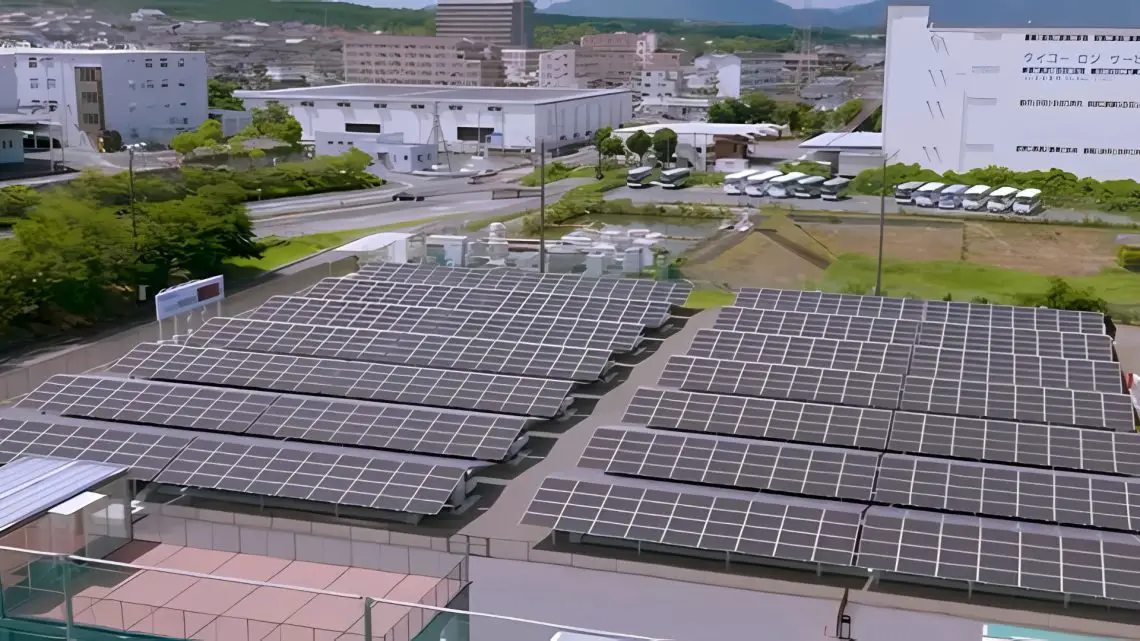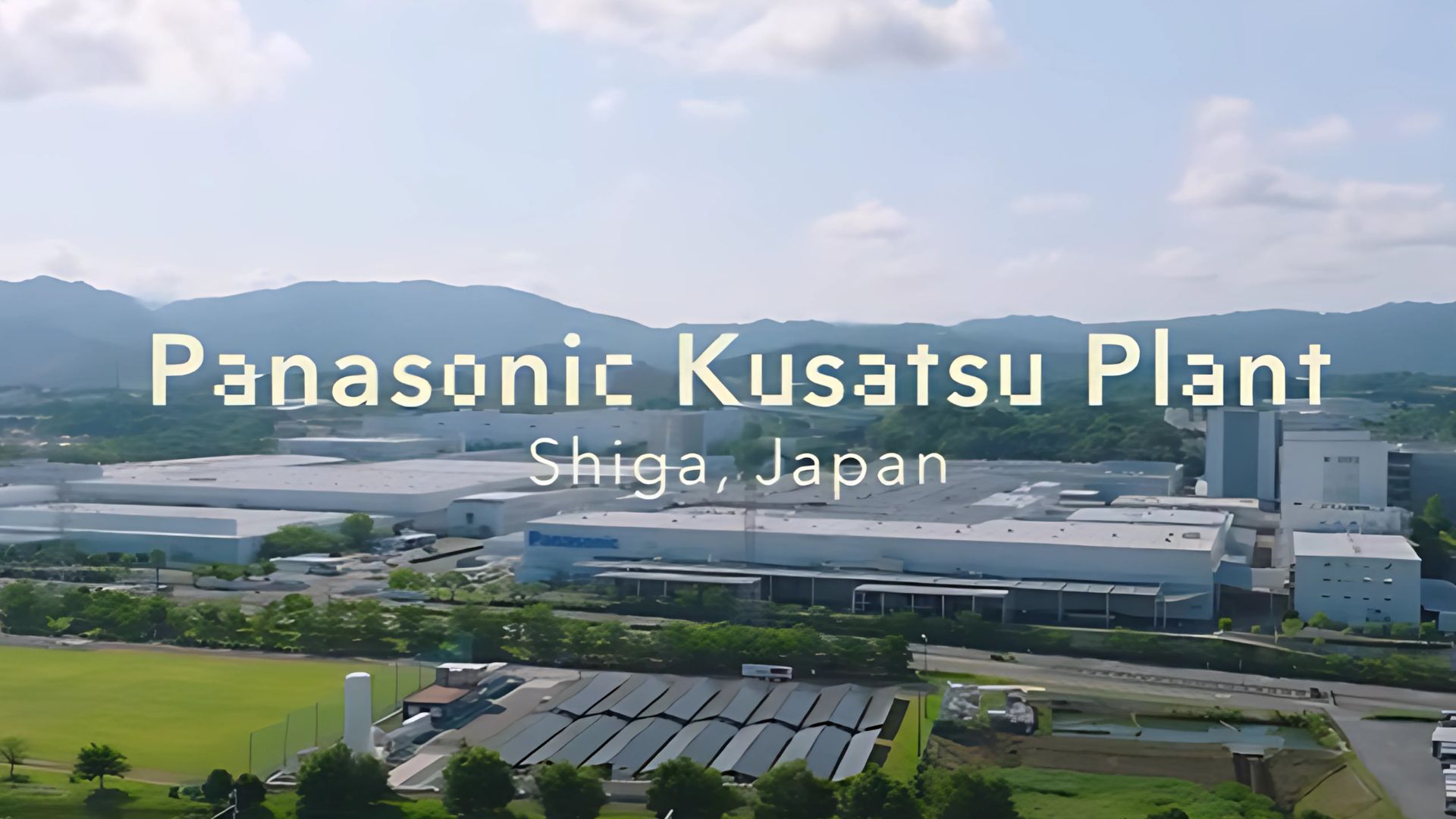
How Panasonic is Breathing New Life Into Old Spaces
December 27, 2024Panasonic’s Cardiff RE100 Facility: Technological Advancements at the Cardiff Facility
Panasonic’s newly launched RE100 facility in Cardiff, Wales, represents a bold leap in renewable energy innovation. Designed to run entirely on renewable sources, the site’s infrastructure integrates hydrogen fuel cells, solar photovoltaic (PV) systems, and battery storage. These systems are managed by Panasonic’s advanced Energy Management System (EMS).
Key components of the facility include 21 hydrogen fuel cells (each rated at 5 kW) with an overall efficiency exceeding 95%, a 372 kW solar array, and a 1 MWh battery system. The compact design of the fuel cells allows flexibility in space usage within the retrofitted 50-year-old building. This scalable setup demonstrates the potential of combining several renewable technologies into one unified energy ecosystem.
How the Technology Works
At the core of the Cardiff facility is a decentralized energy system aimed at achieving maximum efficiency and reliability. The hydrogen fuel cells generate electricity, with their by-product heat recycled for space and water heating, eliminating the need for traditional gas boilers. The solar panels contribute power during daylight hours, while the battery system stores excess energy for use during peak demand or downtime, such as weekends.
The EMS plays a vital role in real-time energy optimization, balancing electricity demand and supply while ensuring a stable power flow. It adjusts operations based on weather conditions and factory energy requirements, making the system versatile for unpredictable power needs. Additionally, Panasonic employs software to manage individual fuel cell lifespans, ensuring uninterrupted operation and efficient maintenance.
Recent Endeavors by Panasonic
The Cardiff project is part of a broader commitment by Panasonic to achieve net-zero emissions across its operations by 2030. This facility aligns with the company’s Panasonic GREEN IMPACT initiative, aiming not only to decarbonize its global operations but also to contribute to a reduction of 300 million tons of carbon emissions by 2050.
Recently, Panasonic announced additional investments in hydrogen technology, including a second renewable energy demonstration project planned for 2025 in Europe. Beyond renewable energy, Panasonic is also advancing its technologies in energy storage and supply chain management, such as the development of a $4 billion electric vehicle battery plant in De Soto, Kansas. These efforts strengthen Panasonic’s role as a key player in the renewable energy and sustainability sectors.
Why This Renewable Retrofit Is Significant
The Cardiff RE100 facility represents more than just a milestone for Panasonic; it reflects a growing global trend in renewable retrofitting. This approach transforms aging industrial facilities into modern, sustainable operations by integrating renewable energy technologies. By retrofitting a 50-year-old plant, Panasonic has set a compelling precedent, demonstrating that even older infrastructure can be repurposed to meet present and future carbon-neutral goals. With initiatives like the UK’s target for net-zero emissions by 2050, such transformations resonate as both innovative and necessary.
Central to this facility is the use of locally sourced green hydrogen, which dramatically reduces reliance on fossil fuels. This renewable energy source, paired with solar power and battery storage, underscores how outdated industrial sites can be revived as clean energy hubs. The Cardiff project has also captured the attention of policymakers and industry leaders, serving as a “beacon project” that highlights the potential of renewable retrofitting to advance the global energy transition. Through projects like this, the trend of renewable retrofitting is gaining traction, offering a pragmatic solution to decarbonizing industrial sectors while leveraging existing infrastructure.
Timeline for Project Completion
The facility is set to begin commissioning its renewable systems in December 2024, and full-scale operations are expected by March 2025. This timeline underscores a rapid implementation process, reflecting Panasonic’s urgency in driving clean energy adoption. Key stages include the installation of fuel cells, solar panels, and battery storage, alongside intensive testing to optimize the interplay between these systems.
Applications and Future Projections
The Cardiff facility provides practical insights into how industrial operators can adopt renewable energy solutions to reduce their carbon footprint. Its technology can be adapted for manufacturing plants, urban powering systems, and emergency power backup solutions in areas prone to natural disasters.
Looking ahead, this framework may influence global energy strategies. The combination of hydrogen, solar, and battery solutions offers scalable possibilities for industries beyond manufacturing, including transportation and large-scale residential developments. The decentralized control system could also enhance grid stability in regions reliant on fluctuating renewable sources.
As renewable technology matures, the models demonstrated at facilities like Cardiff will likely serve as key templates for achieving widespread energy sustainability. These efforts illustrate the feasibility of integrating multiple renewable technologies into cohesive systems, paving the way for broader adoption worldwide.
Through projects like this, progress towards reducing global carbon emissions becomes more tangible, ushering in a cleaner, more resilient energy future.



 With over 15 years of reporting hydrogen news, we are your premier source for the latest updates and insights in hydrogen and renewable energy.
With over 15 years of reporting hydrogen news, we are your premier source for the latest updates and insights in hydrogen and renewable energy.